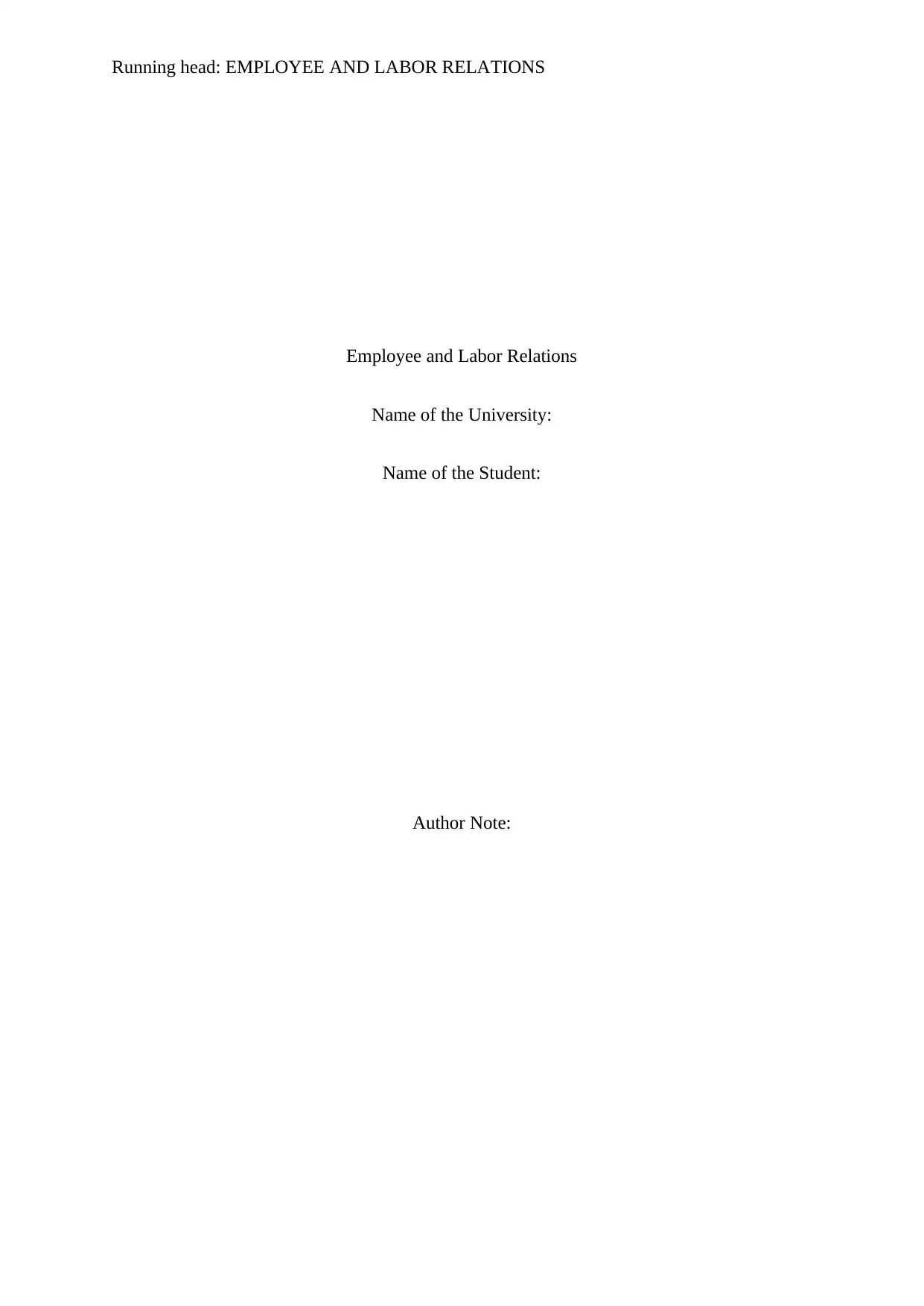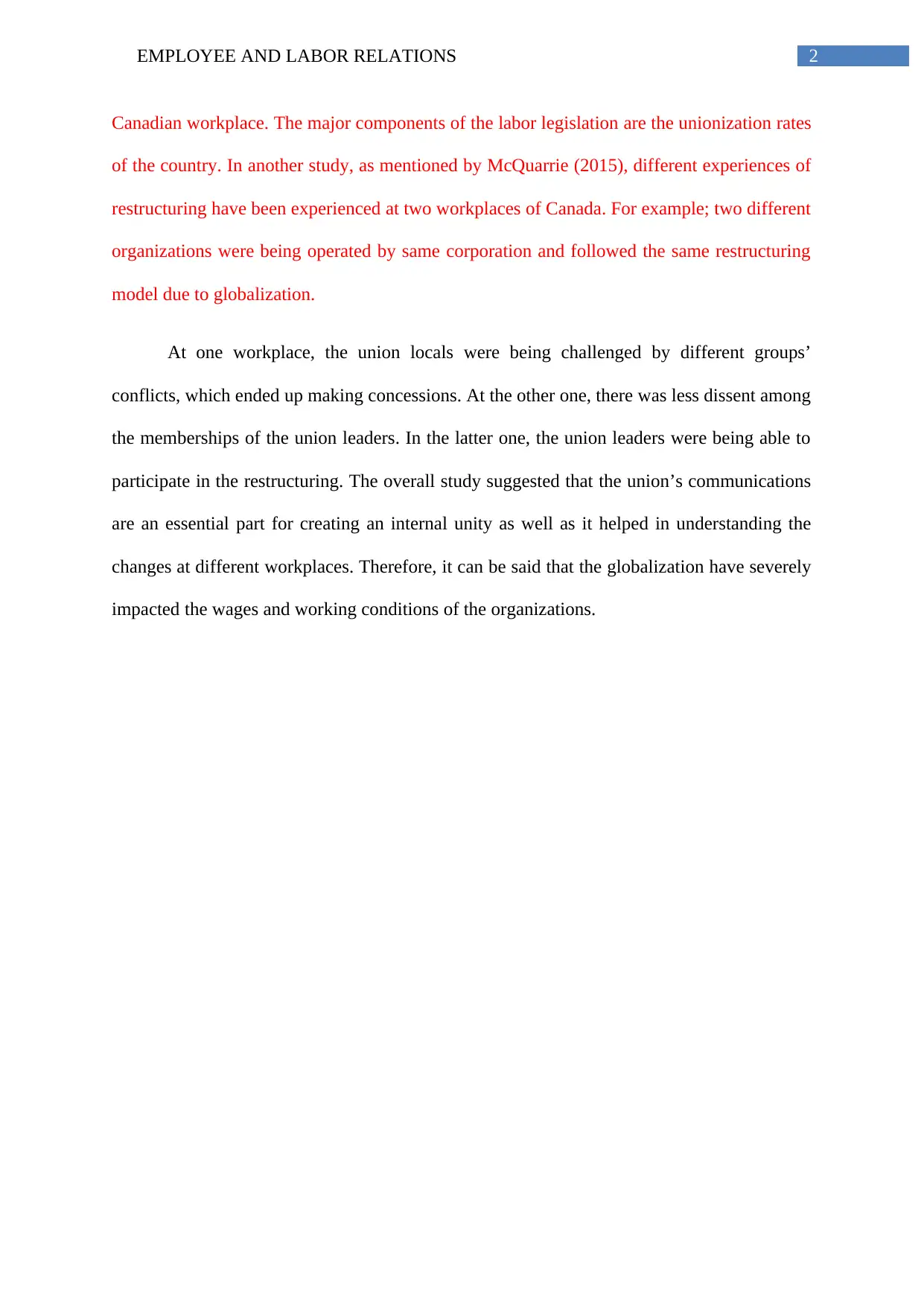Employee and Labor Relations Report: Canadian Workplace Dynamics
VerifiedAdded on 2021/04/24
|4
|574
|54
Report
AI Summary
This report examines the impact of globalization on employee and labor relations within Canadian workplaces. It highlights how globalization has led to changes in wage structures, such as the implementation of two-tier wage systems, and increased part-time employment. The report discusses the importance of collective agreements and unionization in adapting to these changes, as well as the significance of successor ship legislation. Furthermore, it analyzes how technological advancements are affecting collective agreements and organizational structures. The report also presents a case study comparing two workplaces, highlighting the role of union communications in fostering internal unity during restructuring. Overall, the report underscores the significant influence of globalization on the wages and working conditions of organizations, particularly within the Canadian context.
1 out of 4











![[object Object]](/_next/static/media/star-bottom.7253800d.svg)